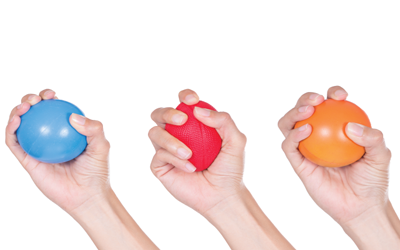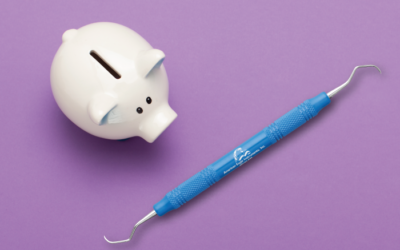-How many of us adapt to our working environment without making provisions for our long-term health? Research shows that this is certainly the case for many dental professionals, who are at greater risk of work-related musculoskeletal disorders and are particularly susceptible to disorders of the upper extremities such as Carpal Tunnel Syndrome (CTS) and Repetitive Strain Injury (RSI). Increasingly, modern dental practices are looking to ergonomics to provide solutions that not only mitigate the risk of short- and long-term discomfort but also optimize patient care and guarantee the longevity of their equipment.
How does instrument weight affect ergonomics?
Ergonomics is the science of designing spaces and instruments to improve comfort, effectiveness, and efficiency. In essence, this means designing instruments and spaces to fit the user, rather than expecting the user to adapt to their instruments and spaces. Ergonomics in dentistry may refer to the design of everything from lighting to seating. In this article, we will be focusing on how the weight of ergonomically designed periodontal instruments can mitigate the need for repetitive movement and excessive pinch force, and in doing so, enable clinicians to reduce the risk of discomfort and fatigue.
Handles for instruments such as root planers, curettes, and probes are available in a variety of shapes, weights, and materials. These factors can influence the amount of muscle activity and pinch force required, which can play a role in practitioner health and well-being. In particular, this article will address how the weight of an instrument affects its ergonomics, and how, by striking the right balance, clinicians can safeguard their health and optimize their technique.
The risk of developing musculoskeletal disorders of the upper extremities is increased when using instruments that are the wrong weight. In fact, weight is one of the most significant impact factors on the ergonomics of manual hand instruments.
Muscle activity
Dental practitioners spend much of their day using periodontal instruments to perform hand movements that are both repetitive and forceful. It stands to reason that motions like scaling and root planing can take a toll not only in terms of short-term muscle fatigue but also on the long-term joint health of clinicians. The results of a 2017 study found that heavier instruments – such as those made with stainless steel handles instead of lighter resin handles – result in increased muscle activity, and by association, a greater risk of injury and fatigue. That being said, instruments that are too light can also cause problems for users as excessive pressure and pinch force may be required to carry out the task effectively.
Pinch force
Another key cause of muscle strain for dental practitioners is the use of excessive pinch force, that is, the force needed to grip an instrument in order to effectively carry out a task like scaling. Instruments that are too light or have a poorly formed tip can exacerbate the required pinch force, while those that are too heavy can require greater muscle activity. Research has found that lighter instruments (around 15g) with a larger diameter (approximately 10mm) reduced the need for excessive grip force or muscle load during scaling.
Scaling technique
Traditional scaling techniques can require a strong pinch force. Effects on the hand can be exacerbated when these traditional techniques are accompanied by heavy stainless steel handles. Many dental practitioners now prefer to use instruments that require a modified technique with reduced bilateral pressure. This can decrease both muscle activity and the pinch force required of the user. Lightweight instruments that are well balanced between the ends are suited for use with a modified technique because they offer better maneuverability and reduce the need for awkward positioning and associated muscle strain.
Improving Ergonomics Through Instrument Selection
With up to 93% of dental hygienists reporting musculoskeletal pain, instrument selection is critical in ensuring both short-term comfort and career longevity. Overall, instruments should be designed with the view to decreasing the amount of time, force and discomfort.
American Eagle’s XP® Sharpen-Free line is designed using an enhanced metal that is both sharper and more durable. Combined with the lighter weight, there is a need for less pressure while removing calculus and tartar. Instead, clinicians can rely on the instrument’s design to allow for a lighter ‘shaving motion’ that alleviates muscle strain on the hands and wrists.
As the name suggests, these instruments are designed to reduce or eliminate the need for repetitive sharpening. Their stronger, sharper edge makes them much more durable than their traditional stainless steel counterparts, with the tip retaining its original shape and efficiency throughout the instrument’s lifespan. These instruments also feature a resin handle that is lighter in weight than traditional stainless steel handles and improves ergonomic hand protection.
The XP Sharpen Free line of dental hygiene instruments supports the modified scaling technique. Users of these lightweight instruments will need to adopt a C-shaped grasp, performing shaving motion to remove tartar and calculus gently. This lighter touch approach improves the protection of the hand and wrists and prevents excessive muscle force that can lead to the fracturing of calculus during scaling.
The takeaway
While clinicians cannot always select their own equipment, they can influence office purchases by recommending instruments that reduce biomechanical stress. By choosing quality, ergonomically designed instruments that suit their needs, dental offices can ward off pain and injury among their clinicians, and what’s more, investing in instruments that are designed with the user’s health in mind and promise to increase efficiency and effectiveness for years to come.





